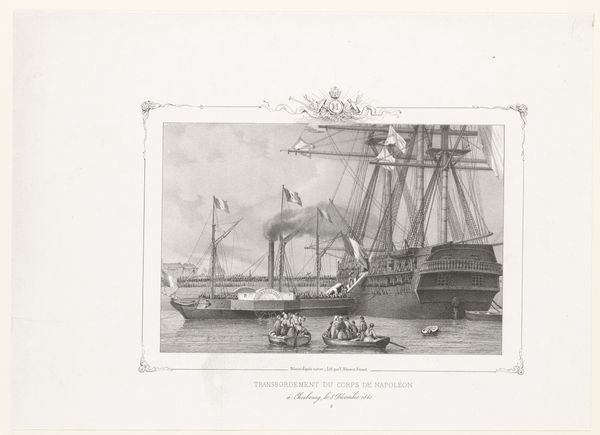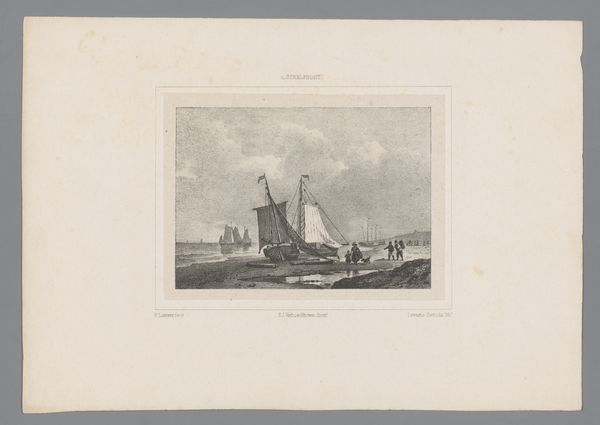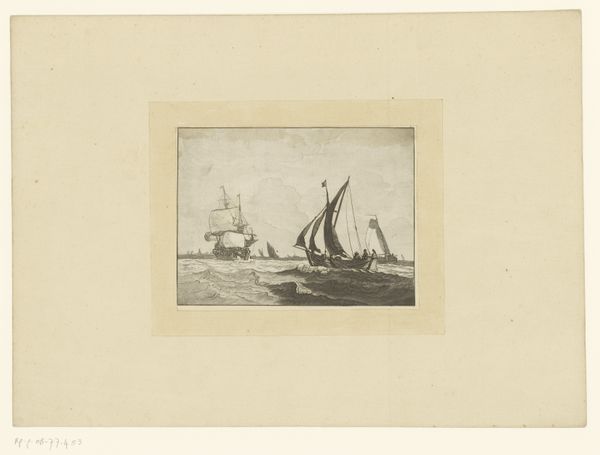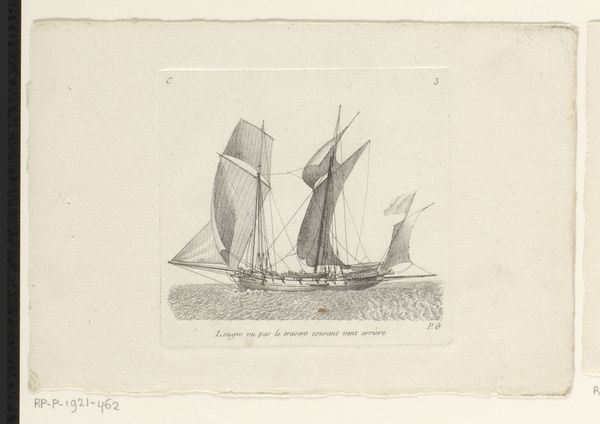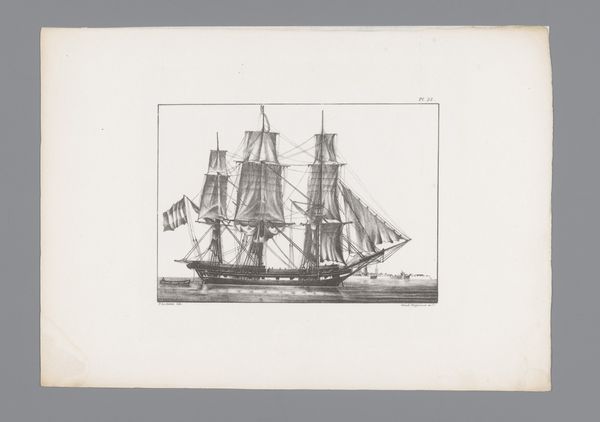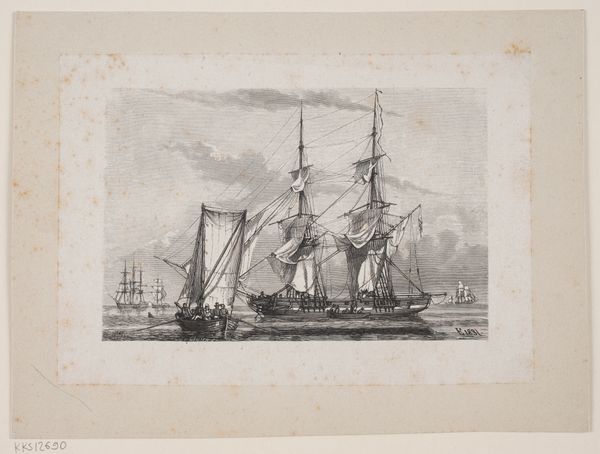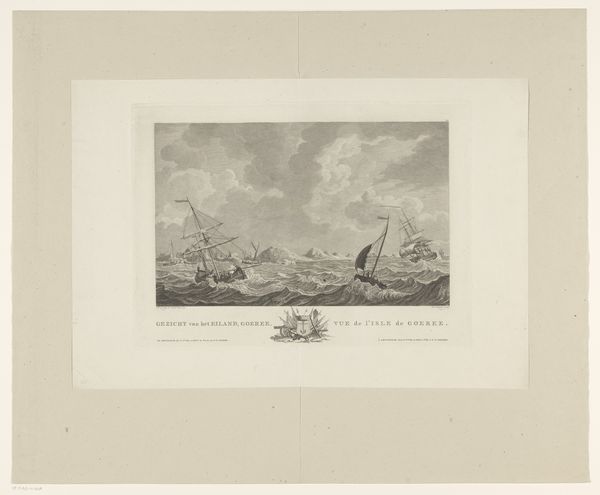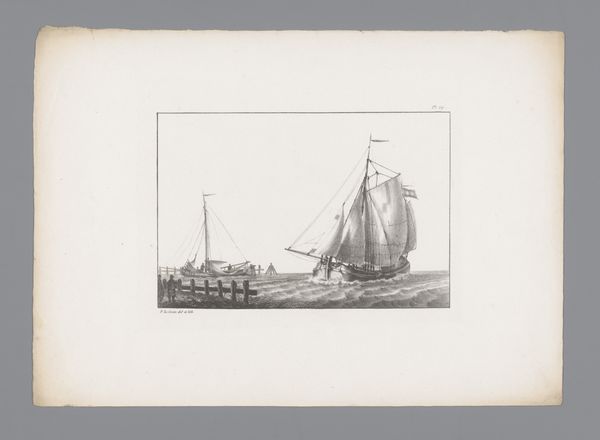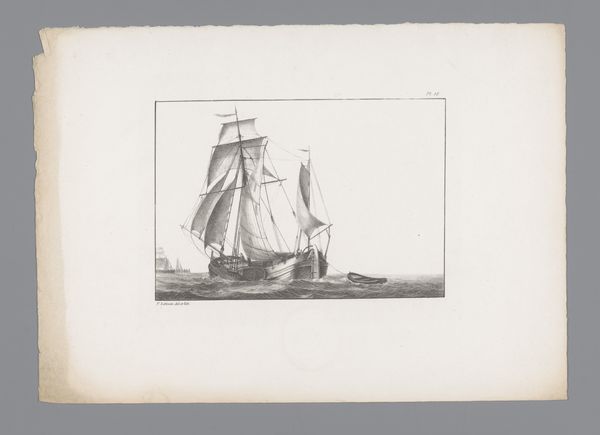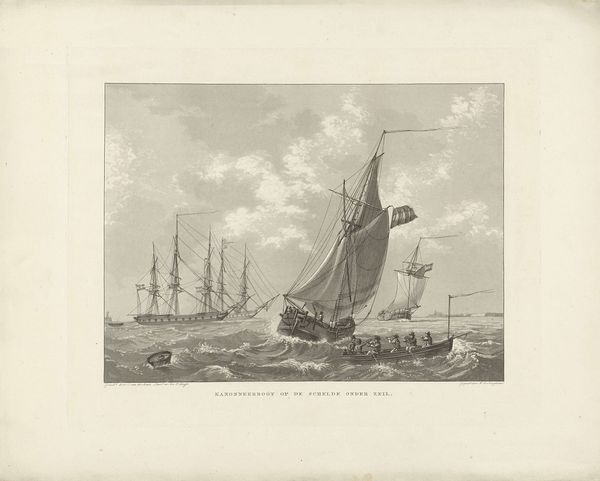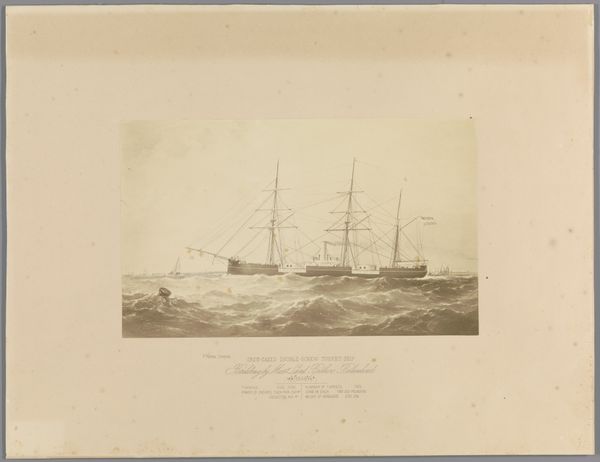
drawing, print, etching, paper
#
drawing
# print
#
etching
#
landscape
#
paper
#
realism
Dimensions: height 198 mm, width 253 mm
Copyright: Rijks Museum: Open Domain
Curator: We're looking at "De loods van Batavia," an etching and print created around 1830 by Paulus Lauters. It’s housed here at the Rijksmuseum. Editor: My initial reaction? It feels wistful, almost melancholic. The subdued palette of greys really sets that tone. Like a memory fading with the tide. Curator: The atmospheric perspective certainly contributes. Notice how Lauters uses precise lines in the foreground vessels, gradually softening detail in the distant ships, creating depth and evoking a sense of vastness. The composition places the focal point slightly off-center, drawing the eye along the coastline and into the receding horizon. Editor: True, the details are captivating. I find myself drawn to the small figures in that rowboat, their expressions lost to the etching, yet they’re a link, a narrative whisper to an age where the sea was their life and road. It makes me wonder about their story. Curator: The "story" here might be one of commerce and colonial presence. Batavia, present day Jakarta, was a vital port for the Dutch East India Company. Lauters, by focusing on this specific locale, offers a commentary on maritime trade and perhaps implicitly, the societal impact of Dutch colonialism. Note the subtle gradation of light, the skillful use of hatching and cross-hatching, to simulate different textures. It invites deeper structural readings too, if we see the water as symbolic of fluidity of capital, ships represent infrastructure. Editor: Oh, without a doubt. One cannot overlook that context. But what’s special is that Lauters achieved this visual texture solely through the etching and printing. There's a remarkable delicacy. Curator: Indeed. Considering it's just etching on paper, it achieves quite a remarkable representation of realism, particularly within the broader landscape tradition of that period. The scale, relative to say, 19th-century oil paintings is very intimate, though. Editor: In fact, the overall image gives me a calm, pleasant sensation. And now, learning this place existed, gives some melancholy to me: it no longer exists in that form. Curator: Reflecting on Lauters’ etching, its strength lies in the subtle blend of aesthetic precision and implied sociopolitical commentary. The structure enhances narrative engagement, something to really consider, for a drawing on paper from the 1830s. Editor: Exactly, from a technical feat to an emotional resonance: art history, indeed.
Comments
No comments
Be the first to comment and join the conversation on the ultimate creative platform.

